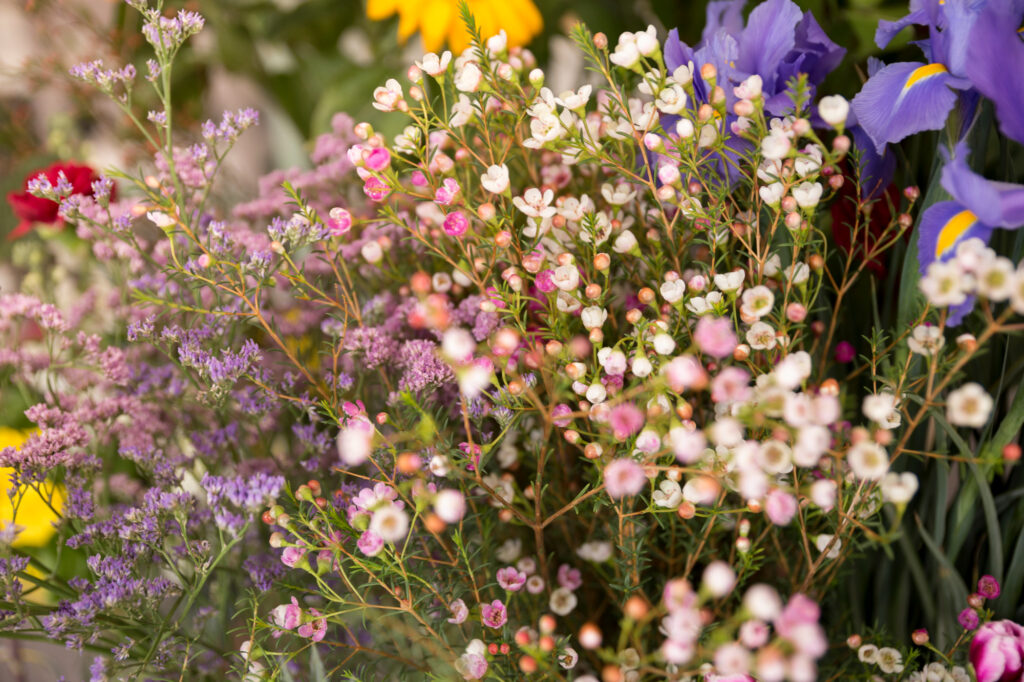A Guide to Pollinator-Friendly and Climate-Resilient Gardens in Europe

Why Gardens Matter for Climate and Biodiversity
The world is facing an unprecedented biodiversity crisis, with pollinator populations declining due to habitat loss, climate change, and pesticide use. In Europe, nearly one-third of bee and butterfly species are in decline (IPBES, 2020), while intensive agriculture and urbanization are reducing green spaces crucial for biodiversity.
But your garden can make a difference. Small actions in urban and suburban spaces can support pollinators, improve soil health, and help retain water—essential for climate resilience. With strategic planting and sustainable practices, gardens can become mini-ecosystems that contribute to larger environmental goals.
At Terry, we support The Pollinators, a movement promoting biodiversity by creating food sources for bees and other pollinators. This guide outlines how you can design a garden that supports biodiversity, improves local water cycles, and mitigates climate change effects.
1. Choose Native and Pollinator-Friendly Plants
One of the most effective ways to support biodiversity is to plant native species. Native plants are adapted to local conditions, requiring less water and no fertilizers, while also providing food for pollinators and birds.
🌼 What to Plant?
- For Bees & Butterflies: Lavender, wild thyme, foxglove, cornflower, viper’s bugloss
- For Hoverflies & Other Pollinators: Yarrow, marjoram, angelica
- Trees & Shrubs: Hawthorn, blackthorn, hazel, wild cherry
- Hedge Alternatives: Mixed native hedgerows instead of fences provide shelter and food for pollinators.
🌍 Resource: The European Pollinator Initiative (European Commission, 2018) provides regional lists of native pollinator plants.
2. Avoid Pesticides & Fertilizers – Choose Regenerative Practices
Chemical pesticides and synthetic fertilizers harm soil microbes and kill pollinators. Instead, use natural solutions:
✔ Compost instead of synthetic fertilizers to enhance soil health. ✔ Mulching to retain moisture and suppress weeds. ✔ Companion Planting: Plant marigolds to repel pests naturally. ✔ Biocontrol Methods: Encourage birds, hedgehogs, and ladybugs to keep pest populations in check.
🌍 Study: A study published in Nature Sustainability (2021) found that reducing pesticide use increases crop pollination and reduces pest populations naturally.
3. Create a Water-Efficient and Climate-Resilient Garden
Water scarcity is a growing issue in parts of Europe. Gardens designed to capture and store rainwater can prevent urban flooding and provide water during dry periods.
💧 How to Improve Water Efficiency?
- Install rain barrels or rainwater harvesting systems.
- Use permeable surfaces (gravel paths, rain gardens) instead of pavement.
- Design a bioswale—a planted trench that captures runoff and filters pollutants.
- Plant deep-rooted perennials like clover, wildflowers, and native grasses to enhance soil water retention.
🌍 Research: The European Environmental Agency (EEA, 2023) highlights nature-based solutions like bioswales and rain gardens as key tools for urban climate resilience.
4. Support Soil Health & Carbon Sequestration
Healthy soils store carbon, reduce runoff, and support plant resilience. Many conventional gardening practices degrade soil through compaction and synthetic additives. Instead, try:
✔ No-Dig Gardening: Avoiding tilling preserves soil structure and microbial life. ✔ Cover Crops: Plant clover or mustard in winter to fix nitrogen and prevent erosion. ✔ Adding Biochar: This charcoal-like material enhances carbon storage and soil fertility.
🌍 Case Study: A study by the University of Wageningen (2022) found that no-dig and organic farming methods increase soil biodiversity and carbon capture by 20-30% compared to conventional methods.
5. Make Your Garden a Wildlife Haven
To support biodiversity beyond pollinators, integrate features that attract and protect wildlife:
🐝 Bee Hotels: Install wooden bee hotels to provide nesting sites. 🐦 Bird-Friendly Features: Plant berry-producing shrubs and provide birdbaths. 🦔 Shelter for Small Mammals: Leave wild corners, log piles, or hedgerows.
🌍 Example: The Netherlands’ Pollinator Strategy (2021) encourages the creation of urban biodiversity corridors connecting private gardens to public green spaces.
6. Turn Your Garden into a Community Effort
Gardens don’t just benefit individuals—they can connect communities and create shared green spaces.
How to Get Involved?
- Join local Pollinator Initiatives: The Pollinators network provides seeds and guidance for community planting projects.
- Transform Public Spaces: Advocate for urban wildflower meadows instead of grass lawns.
- Educate Others: Share knowledge and encourage neighbors to join.
🌍 Inspiration: Cities like Utrecht and Paris are integrating pollinator-friendly green roofs and wildflower strips into urban planning.
How Terry Helps Fund Pollinator Action
Supporting pollinators is not just about gardening. Every time you shop through Terry, you can directly fund projects that create pollinator-friendly habitats.
🌱 Example: By choosing The Pollinators as your mission in Terry, a percentage of your shopping transaction goes towards planting wildflower meadows and supporting beekeepers.
📢 Learn more about how Terry supports The Pollinators: Empowering Pollinators
Conclusion: Small Actions, Big Impact
A garden may seem like a small step, but collective action across Europe can create a network of biodiverse, climate-resilient green spaces. By shifting to sustainable gardening practices, avoiding chemicals, and supporting native biodiversity, we can contribute to a healthier planet.
And with Terry, every purchase can fund real-world pollinator conservation efforts: because protecting nature should be as easy as shopping online.
Sources & References:
- IPBES (2020). Global Pollinator Decline Report.
- European Commission (2018). The European Pollinator Initiative.
- EEA (2023). Nature-Based Solutions for Urban Climate Resilience.
- Nature Sustainability (2021). Effects of Pesticide Reduction on Pollination.
- University of Wageningen (2022). Carbon Sequestration in Organic Soils.
- The Netherlands Pollinator Strategy (2021).